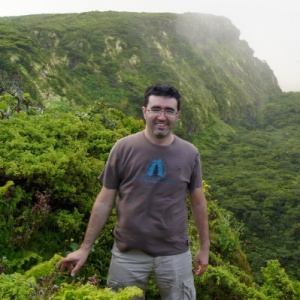Carvalho, J.C., Cardoso, P., Rigal, F., Triantis, K.A. & Borges, P.A.V. (2015) Modeling directional spatio-temporal processes in island biogeography.
Ecology and Evolution,
5, 4671-4682. DOI:10.1002/ece3.1632 (IF2015 2,537; Q2 Ecology)
A key challenge in island biogeography is to quantity the role of dispersal in shaping biodiversity patterns among the islands of a given archipelago. Here, we propose such a framework. Dispersal within oceanic archipelagos may be conceptualized as a spatio-temporal process dependent on: (1) the spatial distribution of islands, because the probability of successful dispersal is inversely related to the spatial distance between islands and (2) the chronological sequence of island formation that determines the directional asymmetry of dispersal (hypothesized to be predominantly from older to younger islands). From these premises, directional network models may be constructed, representing putative connections among islands. These models may be translated to eigenfunctions in order to be incorporated into statistical analysis. The framework was tested with 12 datasets from the Hawaii, Azores, and Canaries. The explanatory power of directional network models for explaining species composition patterns, assessed by the Jaccard dissimilarity index, was compared with simpler time-isolation models. The amount of variation explained by the network models ranged from 5.5% (for Coleoptera in Hawaii) to 60.2% (for Pteridophytes in Canary Islands). In relation to the four studied taxa, the variation explained by network models was higher for Pteridophytes in the three archipelagos. By the contrary, small fractions of explained variation were observed for Coleoptera (5.5%) and Araneae (8.6%) in Hawaii. Time-isolation models were, in general, not statistical significant and explained less variation than the equivalent directional network models for all the datasets. Directional network models provide a way for evaluating the spatio-temporal signature of species dispersal. The method allows building scenarios against which hypotheses about dispersal within archipelagos may be tested. The new framework may help to uncover the pathways via which species have colonized the islands of a given archipelago and to understand the origins of insular biodiversity.





